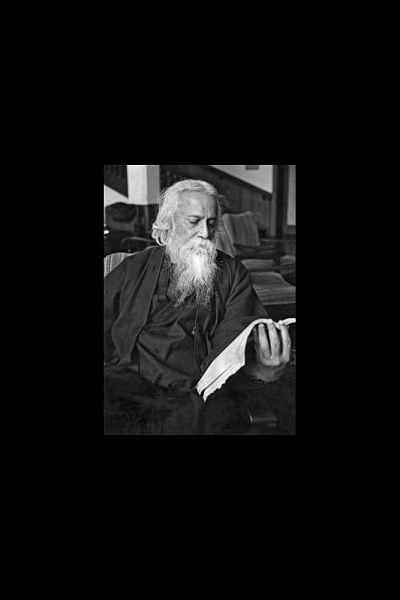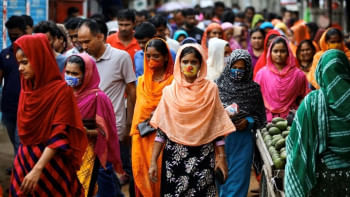75th death anniversary of Rabindranath Tagore (1861-1941)

When Tagore came to Rajshahi and Kushtia (1890) to take charge of his family estate, it seemed miles away from the life he was used to. The setting was a sharp contrast to Kolkata. Eventually, he settled down and spent long stretches of time watching the panoramic scenery from his boat on the river Padma. During rainy days, he would watch the lightning dart across the dark clouds and listen to the thunder echoing over the plains. During the summer, amidst the unruffled peace and tranquility, the truant boy who played the flute on the sultry afternoons, enchanted him. And most importantly, the young 30-year old zamindar became increasingly fascinated by the folk melodies of the bauls, fakirs and bhaisnabas
(folk artistes).
There is however, a misconception that Tagore came in contact with Lalon himself. In fact, Lalon had already passed away by then and it was actually Lalon's disciple whom Tagore met.
The talented disciple, Gagan Harkara, added a fresh dimension to Tagore's rich exposure to Indian and European music.
Tagore was deeply moved by the lyrical beauty, so vividly expressive of the deep-rooted philosophies in a language so simplistic and rhythmic. The spiritual romanticism of Baul philosophy influenced Tagore so deeply that he went as far as calling himself "Rabindra Baul". Later, he even played the role of a blind baul in his play Falguni.
Tagore's compositions of nearly 2,300 songs are seen as falling mainly into four varieties -- Spiritualism, Patriotism, Romance, and Nature. Tagore further composed roughly 60 patriotic songs, mostly during the 1870's, they earned him a great degree of recognition during the Swadeshi movement. Besides his vast collection of songs that have become an integral part of Bengali culture, historians also point to his tremendous contribution in visual arts and in introducing seasonal festivals.
Tagore spent almost eleven years in East Bengal. He travelled to Shilaidaha, Shahjadpur and Potishar. Often, he would go to back to Kolkata and Shantiniketan and would return to the then East Bengal. He travelled in his boat on the Padma, Jamuna, Boral and Nagar rivers. During the monsoon, Tagore was drawn to the jari, shari and bhatiali songs of the boatmen. Many of Tagore's compositions came to reflect this period, depicting the life of the working class.
Some of Tagore's memorable songs were directly influenced by the regional songs from several Indian provinces he traveled to such as Baro Asha Korey, Aaji Subho Din-e and Sakatare Oi Kandiche (Kannada) and Anandaloke Mangalaloke (Mysore).
During this period, many of his works were also reflective of Western influence in his songs. Some remarkable examples include Katobar Bhebechhinu, Purano Shei Diner Katha and others. Most of these songs were aptly used in his lyrical plays, namely, Balmiki Pratibha, Kalmrigaya and Mayar Khela.
Though influenced by the baul songs, Tagore added his own touch. In baul songs, the four stanzaic patterns (asthai, antara, shanchari and abhog) of Dhrupada style are sung in the same tune.
Tagore's legacy of songs underlines his sensitivity to the changing settings and cultures he encountered. Whether it be the influence of the classical songs, the bauls, regional or western music, Tagore's touch worked as a timeless prism, blending all into one unique sparkle, transforming the ordinary into a masterpiece.

 For all latest news, follow The Daily Star's Google News channel.
For all latest news, follow The Daily Star's Google News channel. 



Comments